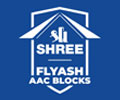India’s climate varies dramatically across regions — from scorching summers in the northern plains and central regions, to high humidity along coastal belts, and cold winters in the northern hills. In such a geographically diverse country, selecting the right building material becomes essential for ensuring comfort and energy efficiency throughout the year. Fly Ash autoclaved aerated concrete blocks (AAC blocks) have emerged as a preferred choice for construction due to their lightweight nature and strong thermal insulation properties. These qualities make them particularly effective at maintaining indoor temperatures. Here, we explain how Fly Ash AAC blocks perform across India’s different climate zones:
Hot Indian summers
High temperatures are a persistent concern in many parts of India, especially in states such as Rajasthan, Gujarat, Madhya Pradesh, and parts of Uttar Pradesh. In such regions, keeping indoor spaces cool without excessive energy consumption is a challenge. Fly Ash AAC blocks prove highly effective in such conditions. Flyash AAC blocks have a cellular or aerated structure, which reduces heat transfer from outside and helps maintain cooler indoor temperatures. This natural insulation helps reduce the dependence on air conditioning, which leads to significant savings on electricity bills. This property makes them an ideal material for hot and dry regions.
Cold weather conditions
In northern and north-eastern regions of India—such as Himachal Pradesh and Uttarakhand, keeping indoor spaces warm during winter is a key concern. Fly Ash AAC blocks excel in these settings thanks to the same aerated structure that insulates against external cold temperatures. These air pockets help to retain warmth within the building during cold weather. By trapping heat inside, they reduce the loss of warmth through the walls. As a result, they limit the need for heaters or electric heating appliances. This leads to energy savings and lower utility bills. In addition, the uniform cellular structure of Fly Ash AAC blocks provides consistent insulation across the entire building envelope.
Humid climates
Many areas in eastern and southern India, such as West Bengal and Odisha, experience high humidity for most of the year. Fly Ash AAC blocks are ideal for such regions because of their inherent moisture resistance. Their porous but well-balanced structure ensures adequate breathability without water retention. This means that while air can circulate within the walls, moisture does not accumulate inside – it helps reduce the growth of mould and mildew. This breathability improves indoor air quality. It also ensures that walls do not trap humidity, which can otherwise lead to long-term damage in traditional brick constructions.
Coastal areas and heavy rains
Coastal regions such as Maharashtra, Tamil Nadu, and Andhra Pradesh often deal with salty air, high humidity, and heavy rainfall during the monsoon. These conditions cause damage to traditional materials like red clay bricks, which absorb water and show salt deposits. Fly Ash AAC blocks are ideal for these areas because they do not absorb much water. This helps prevent damp walls, leaks, and mould. It also protects interior finishes and extends the life of buildings. These blocks also resist pests, fungus, and chemical damage. They remain strong and insulated, even during long periods of rain and moisture. In flood-prone zones, their light weight allows easy transport and quick construction. This helps speed up rebuilding after floods or storms.
Looking for information on high-quality fly ash AAC blocks?
Shree Flyash AAC Blocks offer a wide range of benefits that make them a smart and sustainable choice for modern construction. With excellent thermal insulation, these blocks help maintain indoor comfort by keeping interiors cooler in summer and warmer in winter. This results in up to 30% savings on air conditioning costs.
Built using advanced German technology, these blocks provide superior strength and durability. They also offer high acoustic insulation. Their lightweight nature and strong build make them ideal for earthquake-prone zones, while their high fire resistance adds another layer of safety. Construction with our fly ash AAC blocks proves cost-effective. These blocks weigh eight times less than clay bricks and require only one-third of the joints – this leads to major savings in mortar, steel, labour, and foundation costs. Our fly ash AAC Blocks also reduce water use by up to 70% as they require no curing. Fast installation ensures quicker project completion – this saves both time and money with reliable factory-to-site delivery.

